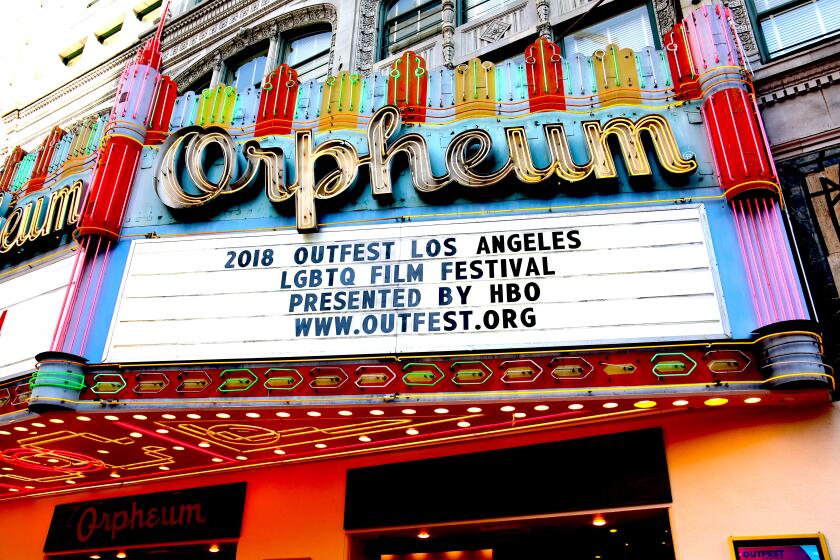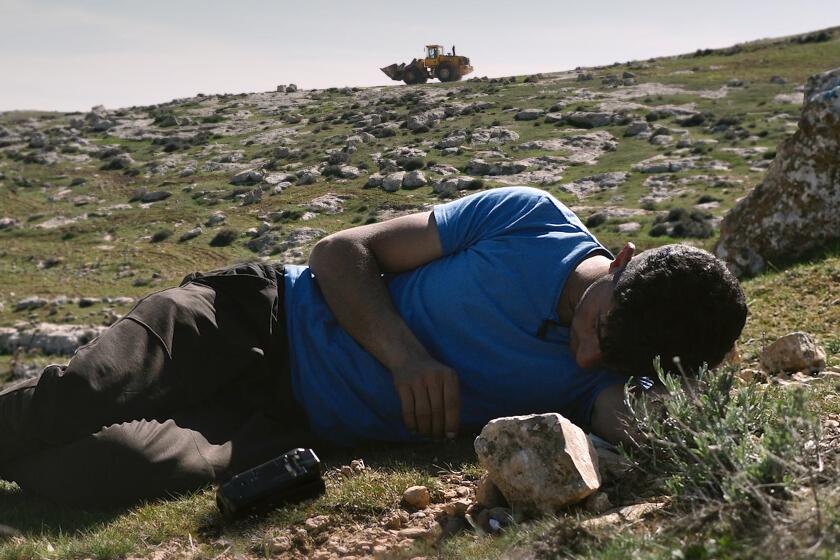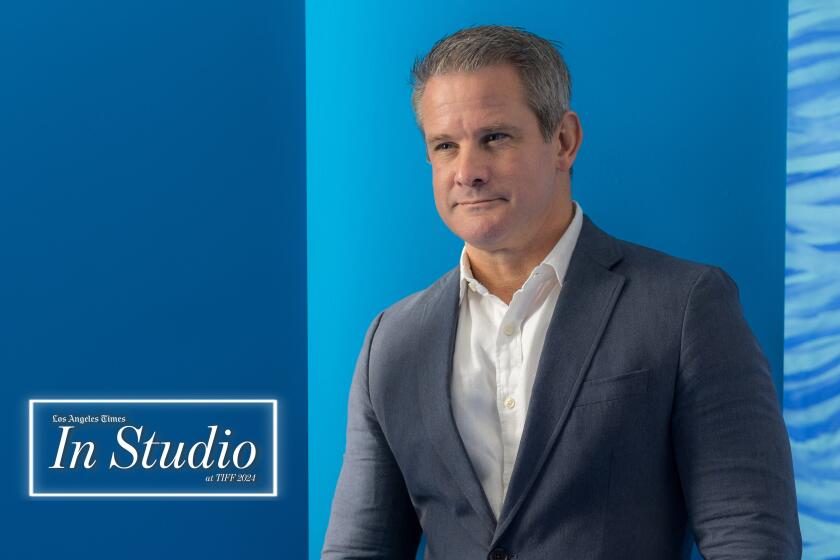How a daughter turned her mother’s decline into the impressive Sundance short ‘Sundowners’
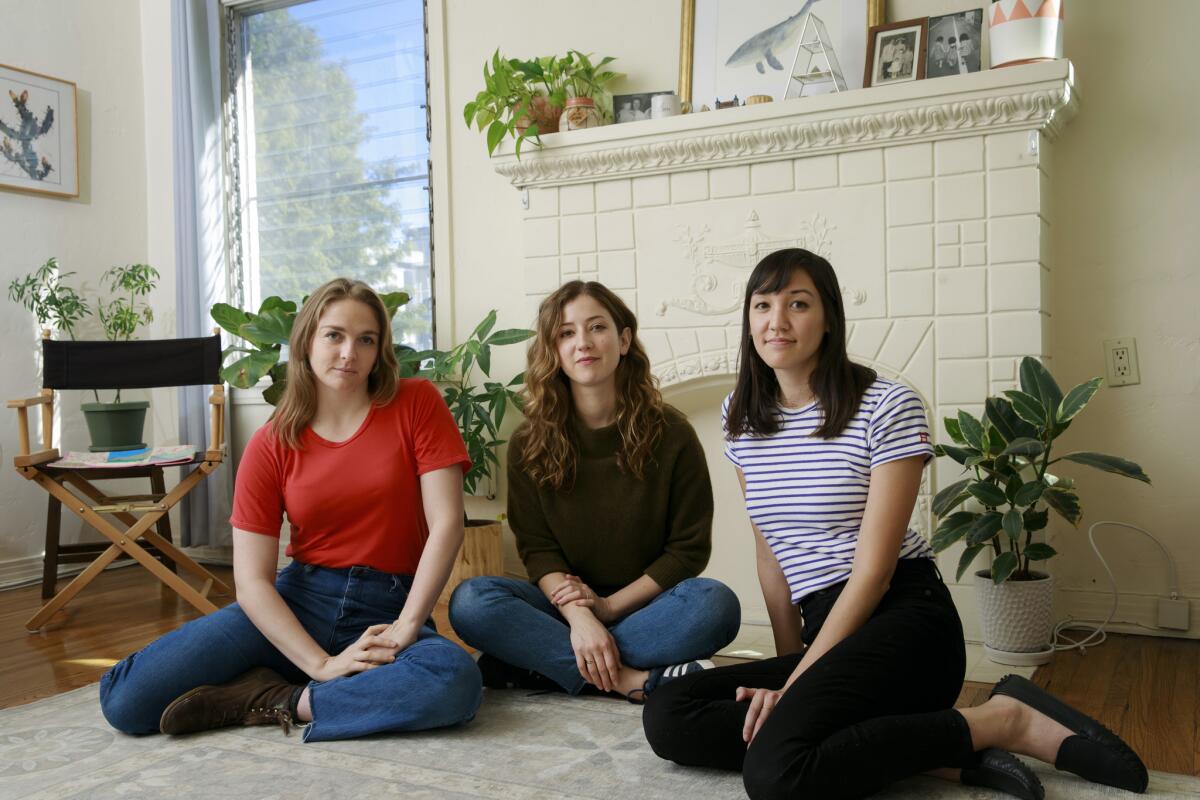
- Share via
The writer Robert Greenfield is one of my oldest friends, someone who’s made me laugh and made me think for more than 50 years. Five years ago, something terrible happened to him and his family. Now, in its wake, comes a poignant and wonderful event.
Bob’s vibrant wife, Donna Frantz, a legendary disc jockey on Carmel’s KLRB who was the first to play the then-unknown Dire Straits on American radio (and has the gold record presented to her by the group to prove it), was diagnosed five years ago with progressive aphasia.
That meant first a shocking loss of speech. Then reading, writing and other cognitive skills began to disappear, an out-of-nowhere, early onset of dementia that devastated the family.
Cut to today. Bob and Donna’s daughter Anna Greenfield, collaborating with her close friends Jessy Hodges and Lisa Steen, has made a first-rate, nine-minute dramatic film, both moving and pointed, stemming from that family experience.
RELATED: Sundance Film Festival ups the ante for representation within the film industry »
More than that, “Sundowners” beat formidable odds to become one of only 20 American fiction shorts chosen to screen at the 2019 Sundance Film Festival out of 4,720 entries. As Bob noted when we spoke, it’s easier to get into Harvard. A lot easier.
The film’s simple one-sentence summation — a father and daughter cook, drink and converse in the kitchen knowing, in Anna’s words, “how to talk about everything except for the most tragic thing happening in the next room” — belies the film’s deftness with both dialogue and emotion.
“It feels like a real moment in its characters’ lives: There are no heroes or villains; things aren’t over-explained; it doesn’t tell you what to think,” explains Mike Plante, Sundance’s senior short film programmer. “It’s brave and talented to do a story like this because it often doesn’t work. It seems easy to do, but it’s very hard to pull off. To create a world and give you a story in nine minutes is really impressive.”
I initially was drawn to “Sundowners” for obvious reasons — because I’ve known the family that inspired its story for decades and I was curious about how you go about recreating aspects of your life in a way that is dramatic and involving.
But the more I talked to the filmmakers involved, for whom mutual support is as natural as breathing, the more I was drawn to an additional narrative thread, to the heartening and very personal specifics of how “Sundowners” was put together.
I don’t have to wait for guys to ask me to help out. I can do this.
— “Sundowners” screenwriter Anna Greenfield
That story’s combination of friendship and drive, selflessness and professionalism, a belief in the power of art and a dose of luck seemed to epitomize the best of the independent world, a film-making universe that Sundance, against increasing odds, still finds ways to celebrate.
The story begins with Anna Greenfield and Hodges, both 32 and not only co-writers here but the closest of friends for 14 years since they connected freshman year at NYU’s Tisch School of the Arts.
In an uncanny touch, before they even officially met, Hodges remembers seeing “the intense, tearful goodbye” of Greenfield and her mother in front of the school as freshman orientation ended. And that’s only the start of how intertwined these two are.
Hodges plays the daughter inspired by Greenfield, and Hodges’ real-life mother, actress Ellen Sandweiss (known for her role in Sam Raimi’s very different “The Evil Dead”) flew herself in from the East Coast to play the role based on Greenfield’s mom.
Director Steen, age 31, was a year behind her friends at NYU, and after everyone eventually moved to Los Angeles post graduation they gravitated toward working with each other.
“A lot of guys we knew started making films, and we felt we could make stuff that’s better,” Greenfield explains. “It was like ‘I don’t have to wait for guys to ask me to help out. I can do this.’”
“Sundowners” is the trio’s third short, and it had a very particular mid-2018 genesis. Hodges was getting married at the end of the summer (to “Saturday Night Live” regular Beck Bennett, a “Sundowners” producer) and she wanted to make one more film before the event.
Greenfield, the trio’s primary writer, had “a lot of index cards on the wall for a feature script on a father and daughter struggling” but wasn’t sure she was ready to deal with the subject.
Then Hodges suggested, “What if we just dipped a toe in it? It’s not about dementia, it’s not about your mother. It’s a father and daughter dealing with something; it’s about a much larger ocean.”
When the script was finished and it came to casting Greenfield’s father — my friend Bob and an individual who has never been confused with anyone else — the trio took a shot in the dark and reached out to someone who had been on their original wish list: Peter Friedman.
FULL COVERAGE: 2019 Sundance Film Festival »
A respected New York actor who has appeared in more than a dozen Broadway shows and has film and TV credits ranging from 1981’s “Prince of the City” to HBO’s current hit “Succession,” Friedman would appear to be out of reach for a short film with a total production budget of $4,500.
But as a working actor herself, Hodges realized their film had a secret weapon. It’s essentially one extended scene, and she knew, “even when you’re on a great show, it’s rare for an actor to do one big long meaty scene. Anyone who comes from theater is desperate for that.”
To everyone’s astonishment Friedman said yes, and a chunk of that $4,500 went toward making “Sundowners” a SAG production so he could take part.
In addition to everything else she was doing, Greenfield worried. A lot. “My doubts about making it were intense; I was just riddled with fear,” she remembers. “I worried that it was too insider, that nobody would want to see this, that I was going to embarrass my family.”
Deciding to shoot in the 85-year-old Carmel house where she grew up created a different set of worries. By this time her mother, whom Bob had cared for for years, was living in a residential care facility. But in addition to being central to the script, Bob was very much still in the house.
“Anna called me and she said, ‘Dad, I’ve got this script,’” Bob remembers. “When she said she wanted to shoot in the house, I knew it was going to be personal. I knew it was going to have to do with the family, and I made a point of not reading it. I wanted her to have artistic freedom.”
Greenfield agrees the fact that she and her father were both writers made things easier: “He understood that this was art, and he gave me a lot of leeway.” But that didn’t make it easy.
“If you move a spoon in my house, I have a breakdown,” Bob reports, “and my daughter brings like 14 people to shoot a movie in my house,” a place where in addition to everything else the wiring was so old “they had me do a 360-degree video, shooting all the outlets in the living room. The house was not exactly equipped for a modern film shoot. If we blew a fuse, all of Carmel would go black.”
But once the tight crew, all friends of the filmmakers, showed up, Bob was won over by how focused and professional they were and how devoted everyone was to an out-of-town project with a three-day shooting schedule.
“The thing that really astonished me was the commitment,” Bob says, citing for instance the gifted cinematographer John De Menil, who arrived at 3:30 a.m. with a king’s ransom worth of borrowed equipment.
“This is a circle of people who are making stuff, working on each other’s projects. People who were motivated not by the paycheck, who didn’t have any clue that this film would go anywhere or be seen by anybody.”
An accomplished writer whose dozen-plus books include classics of rock journalism like “S.T.P.: A Journey Through America With the Rolling Stones” and biographies of Timothy Leary and Ahmet Ertegun, Bob found being a protagonist unnerving.
“I am a writer. I have spent my whole life trying to avoid the spotlight,” he explains. “It’s really interesting seeing a film made in your house about someone who definitely appears to be you. It’s utterly bizarre.”
Making it worthwhile was that this personal story “was made into something that is art. I have to respect that. And I feel so happy for all these people that the hard work that they did will be validated.”
And there have been side benefits. Bob got a tongue-in-cheek location manager credit on the film and, he reports, “there were so many granola bars left, I’m still eating them.”
On a deeper level, Bob understood that “making this film was one of the many ways Anna is processing what’s happening.”
Greenfield, for her part, felt that bringing a film crew to her home, bridging her personal and her professional lives, was “one of the most intense experiences of my life.”
“Sundowners” screens during the Sundance Film Festival in Park City, Utah, at 3 p.m. Saturday at the Library Center Theatre; 9:30 a.m. Monday at the Ray Theatre; 12:30 p.m. Jan. 31 at the Redstone Cinema 2; 2:30 p.m. Feb. 2 at the MARC Theatre; in Salt Lake City at 6 p.m. Jan. 30 at the Salt Lake City Library Theatre; and in Sundance at 3 p.m. Feb. 1 at the Sundance Mountain Resort Screening Room.
Sundance 2019 Film Festival: See the latest video interviews

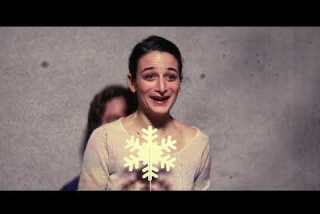
Video: Behind the scenes of the L.A. Times 2019 Sundance photo/video studio
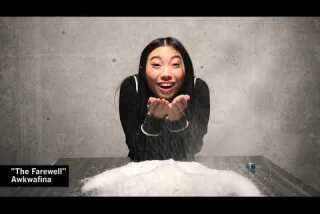
Video: The 2019 Sundance Film Festival Boomerang Supercut
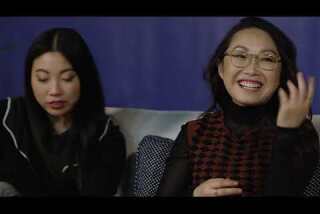
Video: How do you make the most of a small budget?
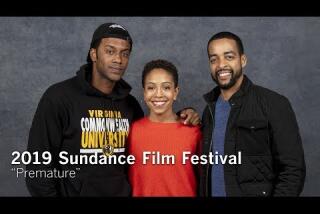
Video: Cast and filmmaker discuss trusting each other while shooting 'Premature'
3:12
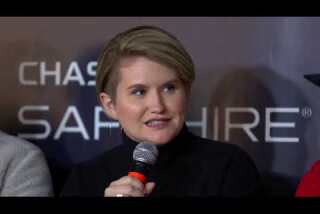
Video: 'Brittany Runs a Marathon' breaks conventions and stereotypes
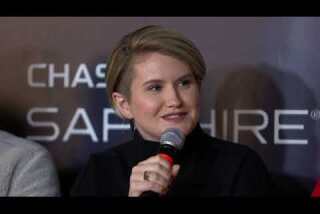
Video: Jillian Bell is tired of getting scripts about body image issues
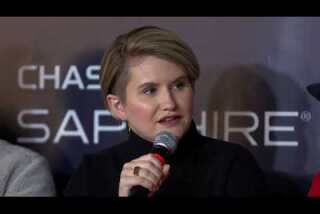
Video: Jillian Bell lost 40 pounds for her role in 'Brittany Runs a Marathon'
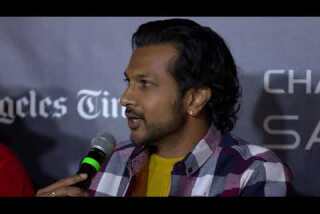
Video: 'Brittany Runs a Marathon' actors break out of their sidekick roles
More to Read
Only good movies
Get the Indie Focus newsletter, Mark Olsen's weekly guide to the world of cinema.
You may occasionally receive promotional content from the Los Angeles Times.




